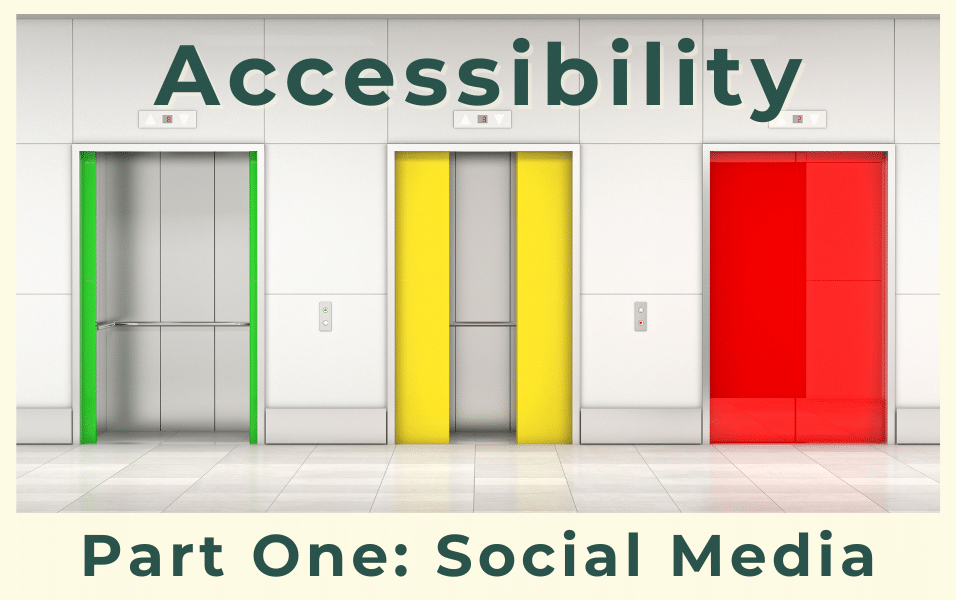Many have spoken up and their voices have been heard. Advocates for a more inclusive and varied digital environment have pushed for features that allow people with disabilities to access and engage with social media platforms more easily. These features and new assistive technology supports allow everyone to engage in conversations, tell their stories, and form connections with others in ways that were previously unattainable.
Understanding the Impact
In today’s digital landscape, social media has become an integral part of our daily lives, connecting us to a vast network of individuals and communities. However, for millions of people around the globe, the digital realm can be rife with obstacles. According to a report by the World Bank, an estimated 15% of the world’s population experiences some form of disability. In the context of social media, this equates to a substantial number of individuals who may encounter challenges when navigating online platforms.
These challenges include inaccessible content and user interfaces, as well as limited support for assistive technology. As a result, there is a growing need for social media platforms to prioritize accessibility and ensure that everyone, regardless of their abilities, can fully participate in the digital conversation. By prioritizing accessibility, social media platforms and content creators can create a more inclusive and diverse online community. This not only benefits individuals with disabilities but also promotes equal opportunities for participation and engagement for all users. Additionally, making social media platforms user-friendly can also lead to increased user engagement and satisfaction, as it allows a wider range of individuals to connect and share ideas.
Embracing Accessibility: A Paradigm Shift
Social media accessibility is more than just following the law; it’s about adopting a different perspective that sees accessibility as a means of achieving diversity and inclusion rather than merely a legal obligation. According to a study done by the Global Disability RightsNow campaign, 71% of people with disabilities will instantly exit a website if it is not accessible. This data emphasizes how important accessibility is to draw in and keep online viewers.
In addition, making social media platforms accessible also enhances the overall user experience for everyone. By incorporating accessibility features such as alt text for images and closed captions for videos, social media platforms can ensure that all users, can fully engage with and interact with the content.
For example, adding alt text to images allows individuals with visual impairments to understand the content of the image through screen reader technology. This inclusive approach not only fosters a more diverse and inclusive online community, but also opens new opportunities for businesses and organizations to reach a wider audience.
Adding closed captioning to stories, Reels & TikToks helps users who are hard of hearing, or who have difficulty processing auditory content. It also may help some users enjoy content while they are in a busy environment.
ACCESSIBILITY TIP: Always check the captions before posting, as this fairly new technology is not without flaws. Taking an extra couple of minutes to edit any misrepresented words may drastically improve a user’s experience.
As a business, you can also improve social media experiences by ensuring graphics with text offer clear, legible, large text. Laying text over a picture without a background to separate the two makes it difficult to read for some users.
Benefits of Social Media Accessibility for Business
By making social media platforms accessible, businesses and organizations can reach a wider audience and tap into new markets. They can also demonstrate their commitment to inclusivity and diversity, which can enhance their reputation and brand image.
Additionally, accessible social media platforms can facilitate better communication and engagement with customers or stakeholders with disabilities, leading to improved customer satisfaction and loyalty.
Over to You
The journey toward social media accessibility is not just a technologically driven endeavour; it is a testament to our capacity for empathy, understanding, and progress. As we navigate the digital sphere, let us remember that by embracing accessibility, we are building a future where everyone, regardless of ability, can partake in the vibrant tapestry of online interactions. In doing so, we foster a sense of belonging, collaboration, and empowerment that enriches the digital landscape for all.
Written by: Jennifer Hanford, MYOB Blogger

